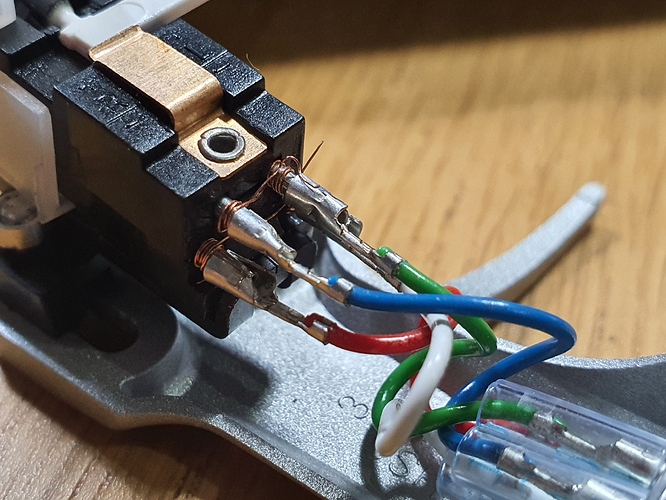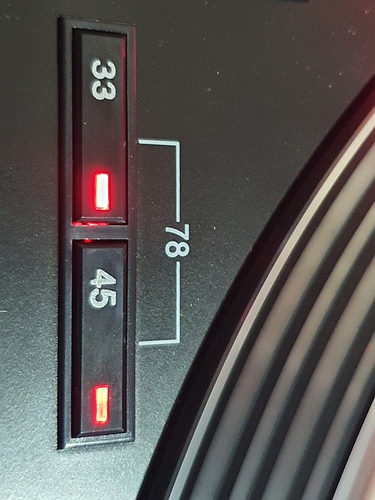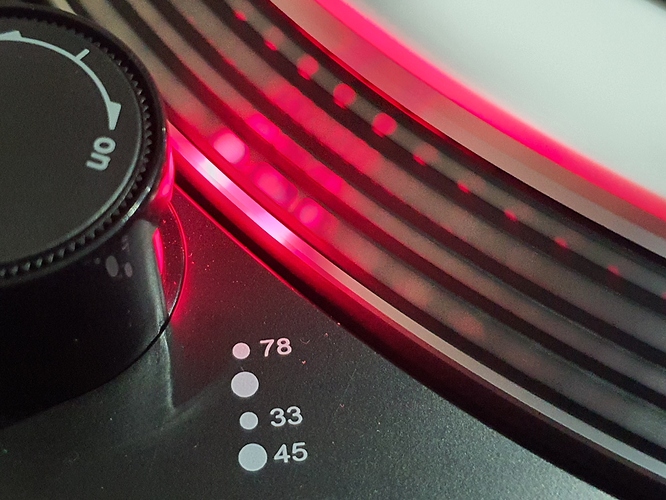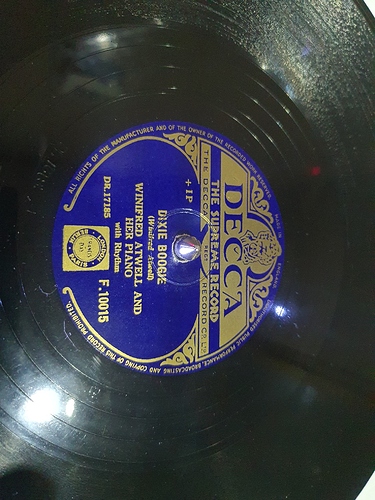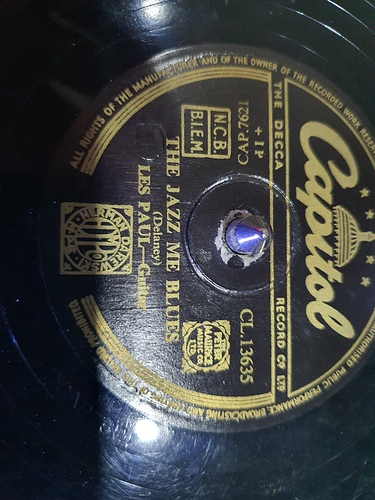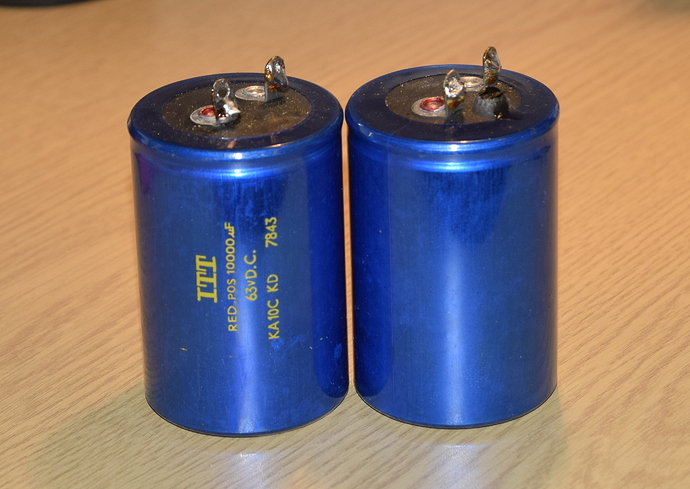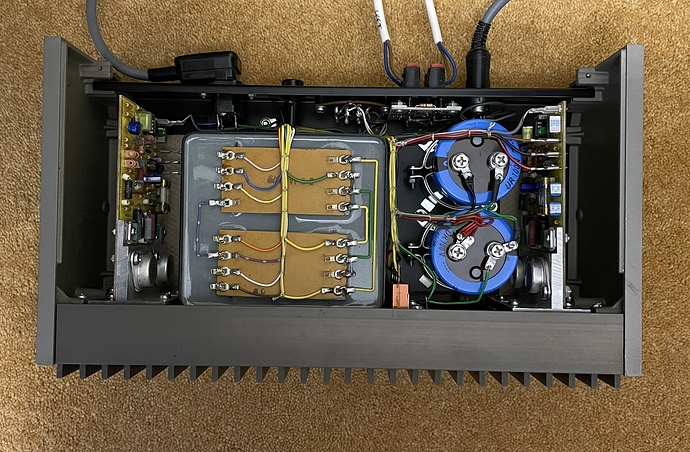Hi Paul, will it still output mono though on the phono stage? 
Barrie
Or won’t it really matter?
Barrie
Without looking at the circuit diagram I couldn’t say. However I would have guessed probably yes. Easy way to find out is to unplug one of the plugs connecting the record deck. You will only get sound from one speaker. Then press the mono button and check if the output changes to both speakers.
I had one in my 1st car - an old Mk3 Cortina, it came with 4 tapes - the only listenable one being Tusk by Fleetwood Mac - which scunnered me of the album, never listened to it again for years - it didn’t help that the 8 track tapes played on continuous repeat!
Good morning all,  its been a while since any activity on this thread, about 7 weeks I reckon
its been a while since any activity on this thread, about 7 weeks I reckon 
What with one thing and another, I’ve been busy with other ‘projects’  Anyway, a while back, I grabbed a collection of 50 78rpm records from the 50’s with some great titles from equally great artists. Having previously purchased the Audio Technica LP120 turntable with the capacity to spin at these speeds, I thought it would just be a case of putting a record on and away you go! Obviously nothing in life is straight forward though
Anyway, a while back, I grabbed a collection of 50 78rpm records from the 50’s with some great titles from equally great artists. Having previously purchased the Audio Technica LP120 turntable with the capacity to spin at these speeds, I thought it would just be a case of putting a record on and away you go! Obviously nothing in life is straight forward though 
So, first thoughts were, buy a 78rpm stylus for the ATVM95 cartridge, bit of a faff swapping over each time so purchased a new AT headshell (in silver this time rather than black) and a cheap 78rpm cart with stylus, put it together and then just swap over very easily. Not so easy, as different cartridge weights and tracking force meant a tone arm recalibration each time I swapped the headshell assembly.  I could live with that but turns out, the new cart was just a stereo cartridge, equipped with a 78rpm stylus.
I could live with that but turns out, the new cart was just a stereo cartridge, equipped with a 78rpm stylus.  OK, I was only ‘testing’ to see how the records sounded before investing far more in a proper mono assembly, possibly. It sounded terrible to be honest, masses of surface noise picked up and was just not cutting it.
OK, I was only ‘testing’ to see how the records sounded before investing far more in a proper mono assembly, possibly. It sounded terrible to be honest, masses of surface noise picked up and was just not cutting it.
More Internet searching produced this though,
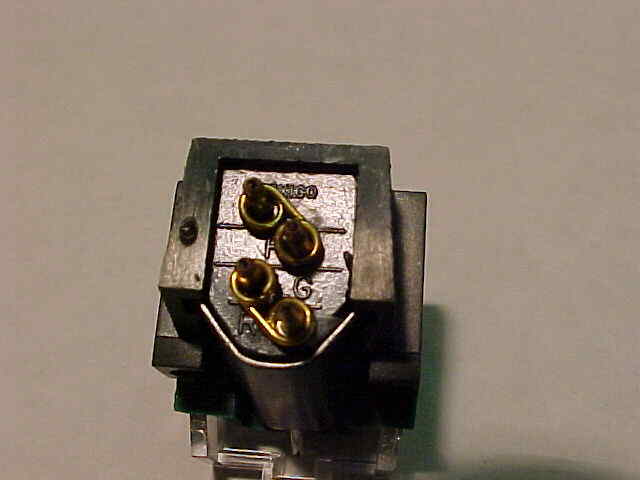
It illustrates how to bridge the terminals, giving mono output. So this happened,
Tidied up a bit after taking the pic but basically done, ensuring no stray wires to short out, single filament used from a multi strand cable.
Reinstalled the cart to the headshell and tested it!
My, what a difference its made! Absolutely 100% improvement  Still some surface noise but reduced massively, the tunes are, well, tuneful! Just so nice to hear 70 year old recordings playing nicely. The records themselves can still benefit from a deep clean but unsure of the best way to do this? But I’m so pleased with the outcome
Still some surface noise but reduced massively, the tunes are, well, tuneful! Just so nice to hear 70 year old recordings playing nicely. The records themselves can still benefit from a deep clean but unsure of the best way to do this? But I’m so pleased with the outcome 

Now I may invest in the 78rpm version of my ATVM95 cartridge, will still have to bridge the pins but obviously a far better cart and stylus than I’ve been experimenting with. VTA has remained good, despite totally different cartridge,
which is pleasing

These are a few of the test records I played, just randomly from the ones I bought. Only another 94 sides to go now!

Stay safe everyone!
Barrie
Well sorted Barrie! The re-calibration thing is unfortunately standard, I have a long-winded job with my 401/SME/Shure deck which plays 78/45/33.333rpm. I have been tempted to by a 78rpm only deck, Rega do one so it would be a nice addition to my Rega P7 which only plays 45rpm and 33.333rpm. Good luck! Great to hear from you!
Good morning Roger, glad you ‘popped’ in to say hi!  I’m hoping, if I do buy a new ATVM95SP 78rpm cart and stylus, fit it to the AT headshell, (identical to the normally used one apart from colour) and bridge the pins, the calibration should remain constant? Negating the need for recalibration.
I’m hoping, if I do buy a new ATVM95SP 78rpm cart and stylus, fit it to the AT headshell, (identical to the normally used one apart from colour) and bridge the pins, the calibration should remain constant? Negating the need for recalibration.  There’s only one way to find out though
There’s only one way to find out though  I do like the idea of a dedicated 78rpm turntable, I’ve a couple to choose from (LEAK & AIWA) both fitted with REGA carbon carts, I can get an Audio Technica 78rpm stylus from the AT3600 cart on which the REGA is based, that might be a good idea, although Mrs B might not see it like that with two turntables on the go!
I do like the idea of a dedicated 78rpm turntable, I’ve a couple to choose from (LEAK & AIWA) both fitted with REGA carbon carts, I can get an Audio Technica 78rpm stylus from the AT3600 cart on which the REGA is based, that might be a good idea, although Mrs B might not see it like that with two turntables on the go! 
Barrie
Barrie
If it is the differing weights of the two cartridges and headshells that means you have to recalibrate why not add a little more weight to the lighter of the two to equalise them?
Also if your amp has mono / stereo switching then that should have the same effect as bridging the cartridge pins.
I remember many years ago seeing a TV report showing the BBC archives going through a process of preserving their 78 records. They were transferring them to reel to reel tape and then using a special pair of scissors which cut out a very small slice from the tape to cut each click and pop. The two ends spliced together obviously. They had a guy manually marking the tape at each one with a Chinagraph pencil and then cutting them all out. End recording sounded great but was a couple of seconds shorter than the original recording when he had finished!
Hiya Paul and thanks for the suggestion  problem is, the ‘lighter’ of the two has a tracking force of 2.0 grams, the heavier one is 5.0 grams (for the 78’s), if I added the 3.0 grams to the lighter one, that would then be way too heavy for normal 33rpm records (I don’t have any 45rpm singles, although would have the same effect) I reckon my solution will be a second identical ATVM95 cartridge, fitted with a 78rpm stylus. This will give me same tonearm balance and VTA, then increase or decrease tracking force and anti skate accordingly when switching out the headshell’s. This can then just be dialled in.
problem is, the ‘lighter’ of the two has a tracking force of 2.0 grams, the heavier one is 5.0 grams (for the 78’s), if I added the 3.0 grams to the lighter one, that would then be way too heavy for normal 33rpm records (I don’t have any 45rpm singles, although would have the same effect) I reckon my solution will be a second identical ATVM95 cartridge, fitted with a 78rpm stylus. This will give me same tonearm balance and VTA, then increase or decrease tracking force and anti skate accordingly when switching out the headshell’s. This can then just be dialled in. 
The other thing, regarding mono output, I could go with two cables from output on TT, L/R stereo to single mono jack, then back out to twin RCA phono plugs, into the rear of my amp. This gives mono outputs to both speaker channels apparently? Called ‘summing’ (or so I’ve read). This would alleviate the need for bridging the pins on the stereo cartridge. A decent preamplifier (which i don’t have), would be capable of switching to mono within the preamp, without any additional alterations. The mono button on the AIWA integrated amps I have, are really only for the FM tuner section as I’ve found out. I’ll keep plodding on with it though, quite interesting really 
Barrie
If you weighted the 78 rpm cartridge and shell to be 3g heavier than the standard one then you could set the weight correctly on the standard one and then it wouldn’t need to be reset when you swapped over. However the anti-skate setting would still need changing so probably best to ignore everything I said!
My solution for mono stereo switching would be a box with 2 x RCA in, 2 x RCA out and a single switch bridging the two inner connections. However as you are only ever likely to want mono with the 78 cartridge your bridging of the pins is akin to the Russians using a pencil in space while the American spent thousands developing a pen to write in zero gravity.
I’ll get my coat. 

 Great reply Paul!! Or the Irish flying to the sun, but going at night! Absolutely no offence meant here, hopefully non taken by anyone reading this.
Great reply Paul!! Or the Irish flying to the sun, but going at night! Absolutely no offence meant here, hopefully non taken by anyone reading this.
Barrie
My source has it that it was Donald Trump who wanted to send a night-time landing expedition to the Sun, but Mike Pence pooh poohed the idea because he said that they wouldn’t be able to see where they were going in the dark.
Ha!  nice one Roger! You know, it’s almost believable!
nice one Roger! You know, it’s almost believable!
Barrie
For those of you with a strong stomach, this is what leakage looks like from the electrolytic capacitors of the power supply of my 40 year old Quad 405. The one on the right looks as though it has suffered a mini volcanic eruption, whilst the left hand one is starting to bulge in the same position - possibly the location of the safety pressure vent.
The hi-fi wouldn’t work following the decoration of the lounge. Presumably a jolt with moving them was enough to sound the death knell.
I replaced all the electrolytic capacitors in both the 44 pre-amp and the 405 power amp, but not succumbing to a lot of bulletin board chatter as how to “improve” the sound. And that appeared to do the trick with everything up and running again. The components were all sourced from CPC Farnell
Thanks for posting  not something I’ve ever tackled myself. I have two LEAK DELTA 75’s awaiting surgery which ‘i think’ are suffering from the same illness. Presume the info to get direct replacements is printed on the original caps?
not something I’ve ever tackled myself. I have two LEAK DELTA 75’s awaiting surgery which ‘i think’ are suffering from the same illness. Presume the info to get direct replacements is printed on the original caps?  due to lockdown and restrictions, I never got them to the repair shop I have used previously. Might be an option to have a go myself maybe.
due to lockdown and restrictions, I never got them to the repair shop I have used previously. Might be an option to have a go myself maybe.
Do you have a pic of the old ones for reference?
Barrie
Not retro (or budget) but from a very respected company, I got this link sent,
A tad too much money for me though! 
Barrie
I’ve got nowhere to put one, so I don’t think I’ll get one either!
If you have a look on the side of the left hand capacitor on my posted pic, then you’ll notice the essential information of capacitance and rated voltage - in this example 10,000 µF (microfarads) and 63 volts DC. This info, together with the physical size is used for determining the most suitable capacitor in the supplier’s ranges. CPC (www.cpc.com) is very useful in that as well as this basic info, they specify tolerance, lead spacing and a host of other parameters in the data sheets for each item.
The modern equivalents of these electrolytics are often smaller than the originals, but I found that if I increased the rated voltage option for these big ones (70 mm high by 50 mm diameter) then the ones stocked came out to be almost the exact size so I didn’t need to drill new mounting holes in the chassis for their clamps (with the subsequent risk of shorts due to hidden swarf).
Certainly if your friendly repair specialist isn’t available during the pandemic, then you have nothing to lose by trying it yourself.
Laurie
The amp with the original worn-out capacitors.
And with the new ones.
I opted for screw mounted terminals to reduce the overall height by a few mm.
Job well done, giving new life to some excellent hi-fi !!! ![]()
![]()
